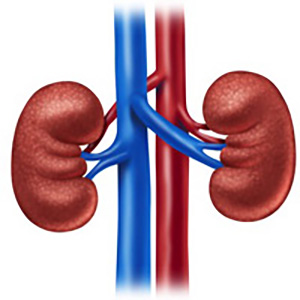Randomized comparison of effect of standard antibiotic prophylaxis versus enhanced prophylactic measures on rate of urinary tract infection after flexible ureteroscopy

Accepted: January 22, 2023
All claims expressed in this article are solely those of the authors and do not necessarily represent those of their affiliated organizations, or those of the publisher, the editors and the reviewers. Any product that may be evaluated in this article or claim that may be made by its manufacturer is not guaranteed or endorsed by the publisher.
Purpose: To compare the rate of post-flexible ureteroscopy urinary tract infection (UTI) in patients subjected to the standard antibiotic prophylaxis alone versus enhanced prophylactic measures.
Methods: A prospective randomized controlled study included 256 patients subjected to flexible ureteroscopy (FURS) for ureteral or renal stones from March 2018 to July 2022. Treatment groups included the standard antibiotic prophylaxis group (group 1, n=128) and the enhanced prophylaxis group (group 2, n=128). Patients in group 1 were injected with intravenous fluoroquinolone one hour preoperatively, and oral antibiotics were used for 24 h postoperatively. Patients in group 2 had urine culture ten days before the procedure; antibiotic-culture based was given for positive asymptomatic cases, while the procedure was deferred for active UTI.
Results: The study groups were comparable regarding patient demographics, stone characteristics, operative time, and intraoperative complications. The overall hospitalization time was 1.68 ± 0.81 days. Postoperative, and overall complications were significantly higher in group 1 (15.6% vs. 6.3%, p = 0.04 and 26.6% vs. 17.2%, p = 0.047), respectively. Twenty patients (15.6 %) in the standard prophylaxis group were diagnosed with UTI in comparison to 8 patients (6.3 %) in the enhanced prophylaxis group (p = 0.047).
Conclusions: Urinary tract infection after FURS could be reduced significantly by utilizing the suggested enhanced prophylactic approach.
Alenezi H and Denstedt JD. Flexible ureteroscopy: Technological advancements, current indications and outcomes in the treatment of urolithiasis. Asian J Urol. 2015; 2:133-141. DOI: https://doi.org/10.1016/j.ajur.2015.06.002
Cho SY. Current status of flexible ureteroscopy in urology. Korean J Urol. 2015; 56:680-688. DOI: https://doi.org/10.4111/kju.2015.56.10.680
Osther PJS. Risks of flexible ureterorenoscopy: pathophysiology and prevention. Urolithiasis. 2018; 46:59-67. DOI: https://doi.org/10.1007/s00240-017-1018-6
Kim JW, Lee YJ, Chung JW, et al. Clinical characteristics of post-operative febrile urinary tract infections after ureteroscopic lithotripsy. Investig Clin Urol. 2018; 59:335-341. DOI: https://doi.org/10.4111/icu.2018.59.5.335
Greene DJ, Gill BC, Hinck B, et al. American Urological Association Antibiotic Best Practice Statement and Ureteroscopy: Does Antibiotic Stewardship Help? J Endourol. 2018; 32:283-288. DOI: https://doi.org/10.1089/end.2017.0796
Wolf JS Jr, Bennett CJ, Dmochowski RR, et al. Best practice policy statement on urologic surgery antimicrobial prophylaxis [published correction appears in J Urol. 2008; 180:2262-3]. J Urol. 2008; 179:1379-1390. DOI: https://doi.org/10.1016/j.juro.2008.01.068
Bapir R, Bhatti KH, Eliwa A, et al. Infectious complications of endourological treatment of kidney stones: A meta-analysis of randomized clinical trials. Arch Ital Urol Androl. 2022; 94:97-106. DOI: https://doi.org/10.4081/aiua.2022.1.97
Pietropaolo A, Bres Niewada E, Skolarikos A, et al. Worldwide survey of flexible ureteroscopy practice: a survey from European Association of Urology sections of young academic urologists and uro-technology groups. Cent European J Urol. 2019; 72:393-397. DOI: https://doi.org/10.5173/ceju.2019.0041
Baboudjian M, Gondran Tellier B, Abdallah R, et al. Predictive risk factors of urinary tract infection following flexible ureteroscopy despite preoperative precautions to avoid infectious complications. World J Urol. 2020; 38:1253-1259. DOI: https://doi.org/10.1007/s00345-019-02891-8
Zhong W, Leto G, Wang L, et al. Systemic inflammatory response syndrome after flexible ureteroscopic lithotripsy: a study of risk factors. J Endourol. 2015; 29:25-28. DOI: https://doi.org/10.1089/end.2014.0409
Senocak C, Ozcan C, Sahin T, et al. Risk Factors of Infectious Complications after Flexible Uretero-renoscopy with Laser Lithotripsy. Urol J. 2018; 15:158-163.
Alezra E, Lasselin J, Forzini T, et al. Prognostic factors for severe infection after flexible ureteroscopy: Clinical interest of urine culture the day before surgery? Prog Urol. 2016; 26:65-71.
Auge BK, Pietrow PK, Lallas CD, et al. Ureteral access sheath provides protection against elevated renal pressures during routine flexible ureteroscopic stone manipulation. J Endourol. 2004;18:33- 36. DOI: https://doi.org/10.1089/089277904322836631
Özkaya F, Sertkaya Z, Karabulut I, et al. The effect of using ureteral access sheath for treatment of impacted ureteral stones at mid-upper part with flexible ureterorenoscopy: a randomized prospective study. Minerva Urol Nefrol. 2019;71:413-420. DOI: https://doi.org/10.23736/S0393-2249.19.03356-3
Sener TE, Tanidir Y, Bin Hamri S, et al. Effects of flexible ureteroscopy on renal blood flow: a prospective evaluation. Scand J Urol. 2018; 52:213-218. DOI: https://doi.org/10.1080/21681805.2018.1437770
Ma YC, Jian ZY, Yuan C, et al. Risk Factors of Infectious Complications after Ureteroscopy: A Systematic Review and Meta-Analysis Based on Adjusted Effect Estimate. Surg Infect (Larchmt). 2020; 21:811-822. DOI: https://doi.org/10.1089/sur.2020.013
Baseskioglu B. The Prevalence of Urinary Tract Infection Following Flexible Ureterenoscopy and the Associated Risk Factors. Urol J. 2019; 16:439-442.
Ozgor F, Sahan M, Cubuk A, et al. Factors affecting infectious complications following flexible ureterorenoscopy. Urolithiasis. 2019; 47:481-486. DOI: https://doi.org/10.1007/s00240-018-1098-y
Copyright (c) 2023 the Author(s)

This work is licensed under a Creative Commons Attribution-NonCommercial 4.0 International License.
PAGEPress has chosen to apply the Creative Commons Attribution NonCommercial 4.0 International License (CC BY-NC 4.0) to all manuscripts to be published.


 https://doi.org/10.4081/aiua.2023.11084
https://doi.org/10.4081/aiua.2023.11084



